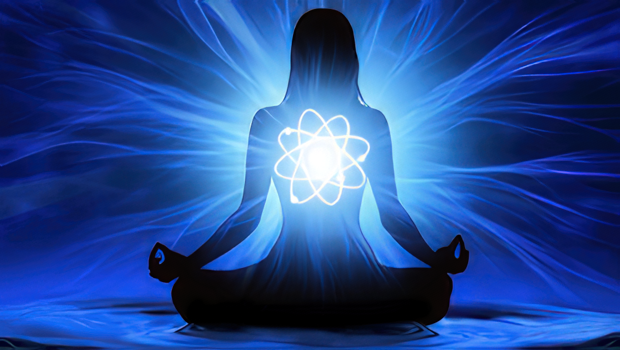The human body is a marvel of self-repair, constantly working to heal itself from everyday injuries, stress, and emotional strain. While many healing processes occur automatically, consciously engaging with self-healing techniques can significantly enhance your physical, emotional, and mental well-being.
Self-healing is a holistic approach that empowers you to use specific practices to support the body’s natural healing abilities. These techniques not only help reduce stress and alleviate pain but also boost mental clarity, foster emotional balance, and promote long-term vitality.
In this article, we’ll explore what self-healing is, how it works, and the various techniques you can start incorporating into your life to enhance your overall health.
What Is Self-Healing?

Self-healing refers to the body’s ability to recover and restore balance naturally. From healing minor cuts and bruises to dealing with stress and emotional turmoil, your body is constantly engaged in a process of repair and restoration. However, this process is not limited to the physical body—self-healing also encompasses emotional and mental well-being.
While your body automatically heals itself from many physical injuries, self-healing techniques enable you to actively engage with and support this process. These practices are designed to accelerate healing, calm the mind, reduce stress, and promote a sense of balance in your life.
The Mind-Body Connection

The connection between the mind and body plays a significant role in self-healing. Chronic stress, negative emotions, and anxiety can disrupt your body’s natural healing abilities. When your mind is under stress, it triggers the release of hormones like cortisol, which can weaken the immune system and hinder the healing process.
On the flip side, calming the mind and cultivating positive emotions activate the parasympathetic nervous system, which supports healing. Practices like meditation, deep breathing, and mindfulness help foster a peaceful environment for the body to recover. By engaging in these practices, you create the conditions for both physical and emotional healing to flourish.
Effective Self-Healing Techniques

Now that we’ve explored the concept of self-healing, let’s take a closer look at some proven techniques that can help you tap into your body’s natural ability to heal.
1. Meditation and Mindfulness:
Meditation is one of the most effective self-healing techniques. It involves quieting the mind and focusing on the present moment, which helps reduce stress, anxiety, and mental clutter. Meditation has been shown to lower blood pressure, ease anxiety, and enhance emotional well-being.
A simple meditation technique to try:
- Find a comfortable, quiet place to sit.
- Close your eyes and focus on your breathing.
- If your mind starts to wander, gently bring your attention back to your breath.
- Start with 5-10 minutes a day, gradually increasing the time as you become more comfortable.
- By regularly practicing meditation, you can reset your nervous system and create an environment that supports long-term healing.
Download Mind is Medicine APP now to learn techniques of meditation and mindfulness.
2. Deep Breathing Exercises:
Deep breathing, also known as diaphragmatic breathing or belly breathing, is a powerful self-healing practice. It activates the body’s relaxation response, countering the effects of stress and promoting a sense of calm.
Here’s how to practice deep breathing:
- Sit or lie down comfortably.
- Place one hand on your chest and the other on your abdomen.
- Breathe in deeply through your nose, allowing your abdomen to rise while keeping your chest still.
- Exhale slowly through your mouth, feeling your abdomen fall.
- Repeat for 5-10 minutes, focusing on slow, deliberate breaths.
- Regular deep breathing helps reduce stress, improve oxygen flow, and enhance your body’s natural healing processes.
Download Mind is Medicine APP now to practice deep breathing exercises.
3. Visualization and Guided Imagery:
Visualization involves using your imagination to picture healing and well-being. Guided imagery takes this a step further by providing a mental script that leads you through positive, healing scenarios. Both practices engage your mind in ways that can influence physical reality.
Visualization can be particularly effective for supporting your body’s healing efforts. When you mentally visualize yourself healing or relaxing, your brain sends corresponding signals to your body. This helps reduce stress and supports the healing process.
To practice visualization:
- Sit in a quiet, comfortable space.
- Close your eyes and take a few deep breaths.
- Imagine yourself in a peaceful, healing environment such as a serene beach or a tranquil forest.
- Visualize a warm, healing light surrounding and filling your body, focusing on areas where you need healing.
- Continue this practice for several minutes, allowing yourself to fully experience the imagery.
- Over time, visualization can help you foster a state of relaxation, enhance healing, and promote overall well-being.
Download Mind is Medicine APP now to practice visualization.
4. Journaling for Emotional Release
Writing can be an incredibly healing practice, especially when it comes to processing emotions. Often, unresolved feelings can lead to stress or even manifest as physical symptoms. Journaling offers a safe space to release and understand these emotions.
When you journal, you allow your thoughts and feelings to surface, which can help you gain clarity and release pent-up emotional energy. Regular journaling helps clear mental blockages, providing a sense of emotional relief and fostering healing.
How to start journaling for healing:
- Set aside time each day or week to write freely.
- Write about anything on your mind—whether it’s emotions, challenges, or experiences.
- Allow yourself to be honest and open, as the practice is just for you.
- Over time, review your entries to identify patterns or breakthroughs in your healing journey.
- Journaling is an effective way to clear emotional blockages and support your self-healing journey.
5. Yoga and Movement
Yoga combines physical movement, breathing, and mindfulness, making it one of the most effective self-healing techniques. By incorporating gentle stretches, deep breathing, and focused attention, yoga helps release physical tension while calming the mind.
Yoga poses not only improve flexibility and strength but also help relieve pain, reduce stress, and promote mental clarity. This practice fosters a deep connection between mind and body, creating the perfect environment for healing.
Some healing yoga poses to try:
- Child’s Pose: A restorative pose that relaxes the lower back and promotes relaxation.
- Legs Up the Wall: This gentle inversion improves circulation, reduces stress, and calms the nervous system.
- Seated Forward Bend: A calming stretch for the spine and hamstrings, encouraging introspection and relaxation.
Just 10-20 minutes of yoga per day can help reduce stress and support your body’s natural healing processes.
Download Mind is Medicine APP now to try different types of Yoga poses.
6. Energy Healing Practices:
Energy healing involves working with the body’s energy fields to restore balance and support healing. Techniques like Reiki, acupuncture, and chakra balancing focus on clearing energetic blockages and promoting a smooth flow of energy throughout the body.
These techniques are often used alongside other healing modalities to reduce stress, release emotional trauma, and improve overall energy levels. Many people find energy healing beneficial for chronic pain, fatigue, or emotional imbalances.
If you’re interested in energy healing, consider working with a certified practitioner or learning basic energy balancing techniques to practice at home.
Incorporating Self-Healing into Your Life

Self-healing is not a one-time event but an ongoing process. By integrating self-healing techniques into your daily routine, you can cultivate a healthier, more balanced life.
Here’s how to start:
- Establish Daily Healing Habits: Whether through meditation, deep breathing, or journaling, commit to regular self-healing practices that help you connect with your body.
- Tune Into Your Body’s Signals: Pay attention to how your body feels and responds to different experiences. Recognize when you need rest, relaxation, or emotional release.
- Practice Self-Compassion: Healing takes time, and it’s important to be kind and patient with yourself as you navigate the journey.
Celebrate Small Wins: Healing is gradual, so take time to acknowledge small victories and improvements along the way.
Conclusion
Self-healing is a powerful and transformative journey. By practicing techniques such as meditation, deep breathing, journaling, and yoga, you can support your body’s natural healing processes and create a sense of balance in your life. Remember, your body is designed to heal, and with a little mindfulness and intentionality, you can tap into this innate power to achieve greater well-being and vitality.
Start small, stay consistent, and watch as these self-healing techniques positively transform your life, one step at a time.



